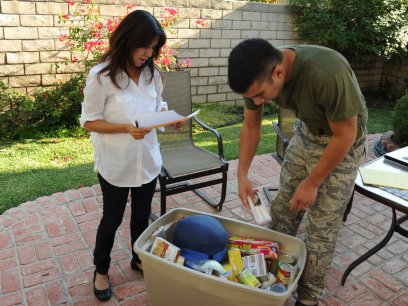
While many people might feel as though they get a little blue when the days get shorter and the temperatures start to drop, these seasonal changes can actually be linked to a more serious medical condition: Seasonal Affective Disorder, or SAD. The National Institute of Mental Health considers Seasonal Affective Disorder to be a type of depression, one that shows a recurring seasonal pattern—to be diagnosed with SAD, an individual must meet the full criteria for major depression, with their symptoms coinciding with specific seasons. While most cases of SAD are aligned with the winter months, there are rare instances of individuals whose symptoms align with the summer months.
Is SAD the same thing as depression?
As with major depression, SAD's symptoms include feelings of depression, hopelessness, a lack of energy and interest, trouble sleeping and concentrating, changes in appetite and weight, and self-destructive thoughts. Specifically, those who have winter-pattern SAD may also experience hypersomnia (or trouble staying awake during the day, such as at work or school), as well as overeating, weight gain, and social withdrawal.
In people who have Seasonal Affective Disorder, the brain has difficulty regulating serotonin, a neurotransmitter that is believed to be responsible for balancing mood. These difficulties are exacerbated when the body has less exposure to sunlight, as occurs during the shorter days of winter. At this point, the lack of sunlight leads to depleted levels of serotonin in the parts of the brain where it can boost the mood, leading to depression. In addition to seasonal changes of serotonin levels for individuals affected by SAD, it is also thought that the hormone melatonin contributes to SAD symptoms. Melatonin responds to darkness by making you sleepy—when darkness arrives earlier in the day, melatonin and the associated drowsiness are triggered, disturbing the body's internal clock regulating night and day. (Click here for a more detailed explanation of the clinical basis of Seasonal Affective Disorder.)
What are the risk factors for SAD?
Risk factors for SAD vary depending on your gender, geography, age, and family history. Women are four times as likely to be diagnosed with SAD, and younger adults have a higher risk of SAD than older adults. Where you live is a major determinant in your risk for SAD—Seasonal Affective Disorder is more frequent in people who live far north or south of the equator, where seasonal changes in day length are far greater than they are the earth's midsection. In the United States, 1% of those living in Florida experience SAD, while 9% of those living in Alaska are affected. People who do shift work—due to the time constraints of their occupation, they may go outside even less frequently—may be at an increased risk for SAD.
The phenomenon was first documented as a treatable clinical condition in the 1980's, when a physician working for the National Institutes of Health moved from South Africa to the states and noticed that his productivity took a nosedive in the winter, but returned to normal in the spring. The physician, Norman Rosenthal, worked with his colleagues who were researching melatonin to apply their research and share their findings on the impact that bright light could have on patients who had been diagnosed with SAD.
For more information on Seasonal Affective Disorder and treatment, please consult the National Institute of Mental Health.
Sources:
- https://www.hindawi.com/journals/drt/2015/178564/
- https://www.nimh.nih.gov/health/topics/seasonal-affective-disorder/index.shtml


